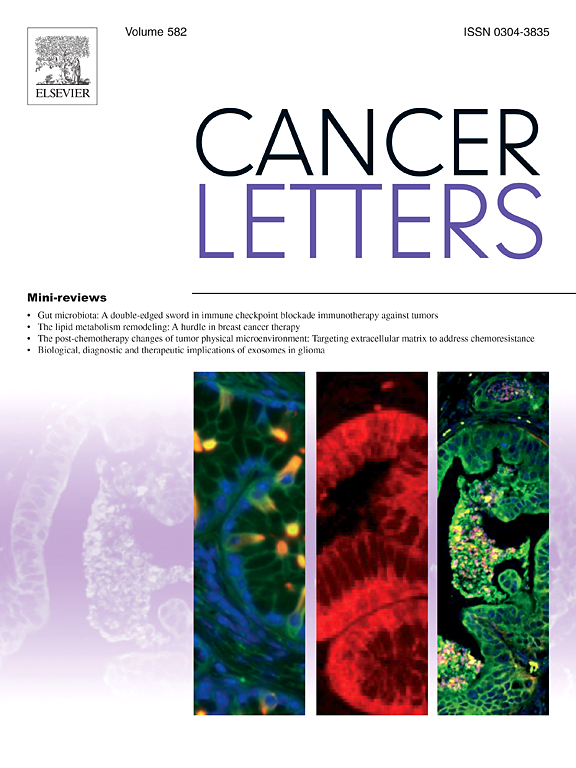Semaphorins、neuropilins 和 plexins 在癌症进展中的作用。
IF 9.1
1区 医学
Q1 ONCOLOGY
引用次数: 0
摘要
人们对神经系统与癌症之间相互联系的认识取得了进展,强调了半隐蛋白(SEMAs)及其受体神经纤蛋白(NRPs)和神经丛蛋白(PLXNs)在癌症进展中的功能作用。SEMAs 是一个保守而广泛的家族,由广泛表达的可溶性蛋白和膜相关蛋白组成,最初被描述为轴突导向以及神经和血管发育的调控因子。然而,最近的研究进展表明,它们在癌症进展中具有双重作用,既可作为肿瘤促进因子,也可作为肿瘤抑制因子。SEMAs 的作用源于它们与特异性共受体/受体 NRPs/PLXNs 的相互作用,后者也被描述为在癌症进展中发挥作用。它们可以影响癌细胞和肿瘤微环境成分,调节肿瘤发生的各个方面,如肿瘤发生、肿瘤生长、侵袭和转移扩散或治疗耐药性。在本综述中,我们将重点讨论这些轴突导向信号及其受体和共受体在癌症各方面的作用。此外,我们还强调了它们作为未来癌症治疗新方法的潜在应用。本文章由计算机程序翻译,如有差异,请以英文原文为准。
Role of semaphorins, neuropilins and plexins in cancer progression
Progress in understanding nervous system-cancer interconnections has emphasized the functional role of semaphorins (SEMAs) and their receptors, neuropilins (NRPs) and plexins (PLXNs), in cancer progression. SEMAs are a conserved and extensive family of broadly expressed soluble and membrane-associated proteins that were first described as regulators of axon guidance and neural and vascular development. However, recent advances have shown that they can have a dual role in cancer progression, acting either as tumor promoters or suppressors. SEMAs effects result from their interaction with specific co-receptors/receptors NRPs/PLXNs, that have also been described to play a role in cancer progression. They can influence both cancer cells and tumor microenvironment components modulating various aspects of tumorigenesis such as oncogenesis, tumor growth, invasion and metastatic spread or treatment resistance. In this review we focus on the role of these axon guidance signals and their receptors and co-receptors in various aspects of cancer. Furthermore, we also highlight their potential application as novel approaches for cancer treatment in the future.
求助全文
通过发布文献求助,成功后即可免费获取论文全文。
去求助
来源期刊

Cancer letters
医学-肿瘤学
CiteScore
17.70
自引率
2.10%
发文量
427
审稿时长
15 days
期刊介绍:
Cancer Letters is a reputable international journal that serves as a platform for significant and original contributions in cancer research. The journal welcomes both full-length articles and Mini Reviews in the wide-ranging field of basic and translational oncology. Furthermore, it frequently presents Special Issues that shed light on current and topical areas in cancer research.
Cancer Letters is highly interested in various fundamental aspects that can cater to a diverse readership. These areas include the molecular genetics and cell biology of cancer, radiation biology, molecular pathology, hormones and cancer, viral oncology, metastasis, and chemoprevention. The journal actively focuses on experimental therapeutics, particularly the advancement of targeted therapies for personalized cancer medicine, such as metronomic chemotherapy.
By publishing groundbreaking research and promoting advancements in cancer treatments, Cancer Letters aims to actively contribute to the fight against cancer and the improvement of patient outcomes.
 求助内容:
求助内容: 应助结果提醒方式:
应助结果提醒方式:


